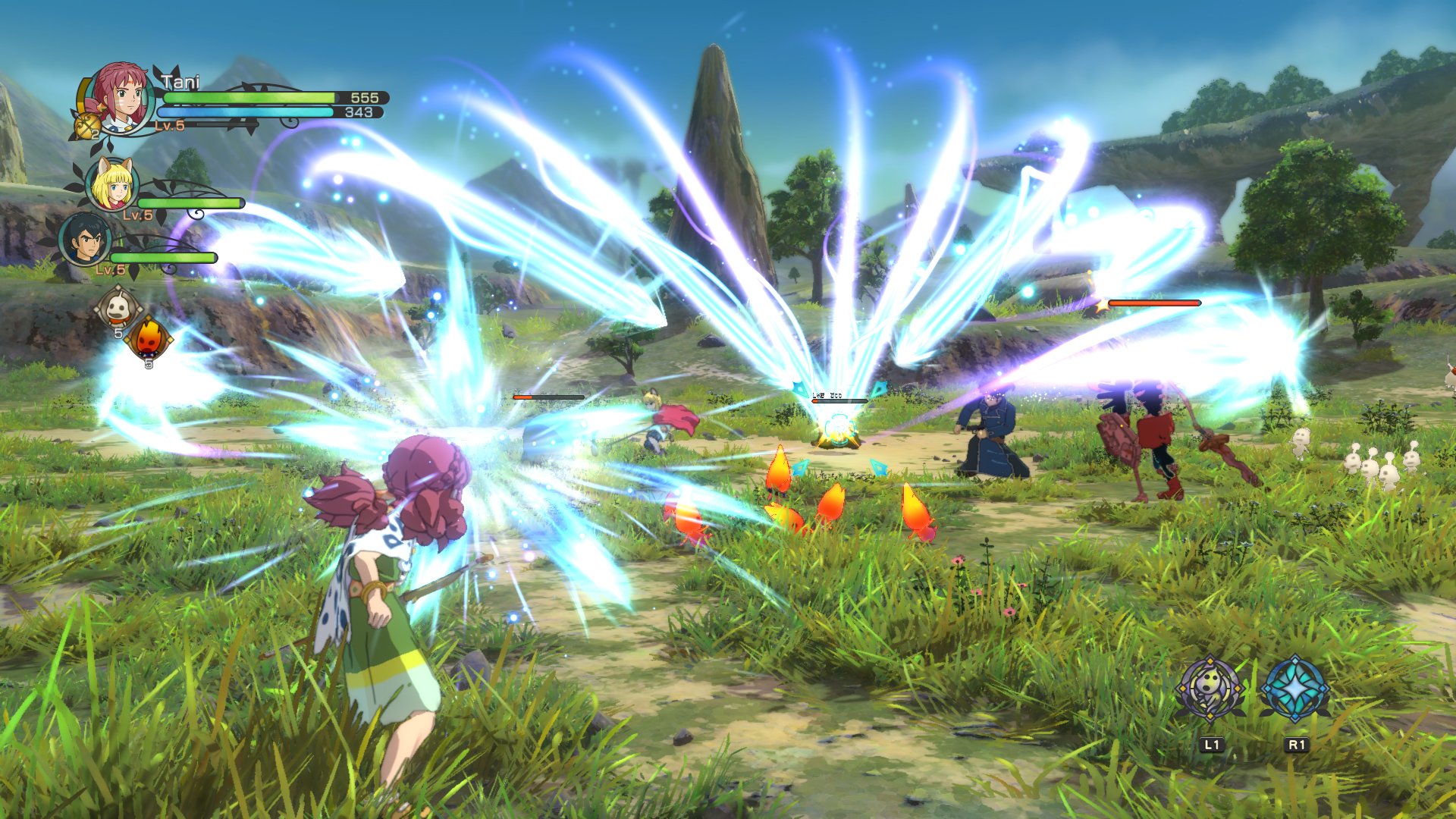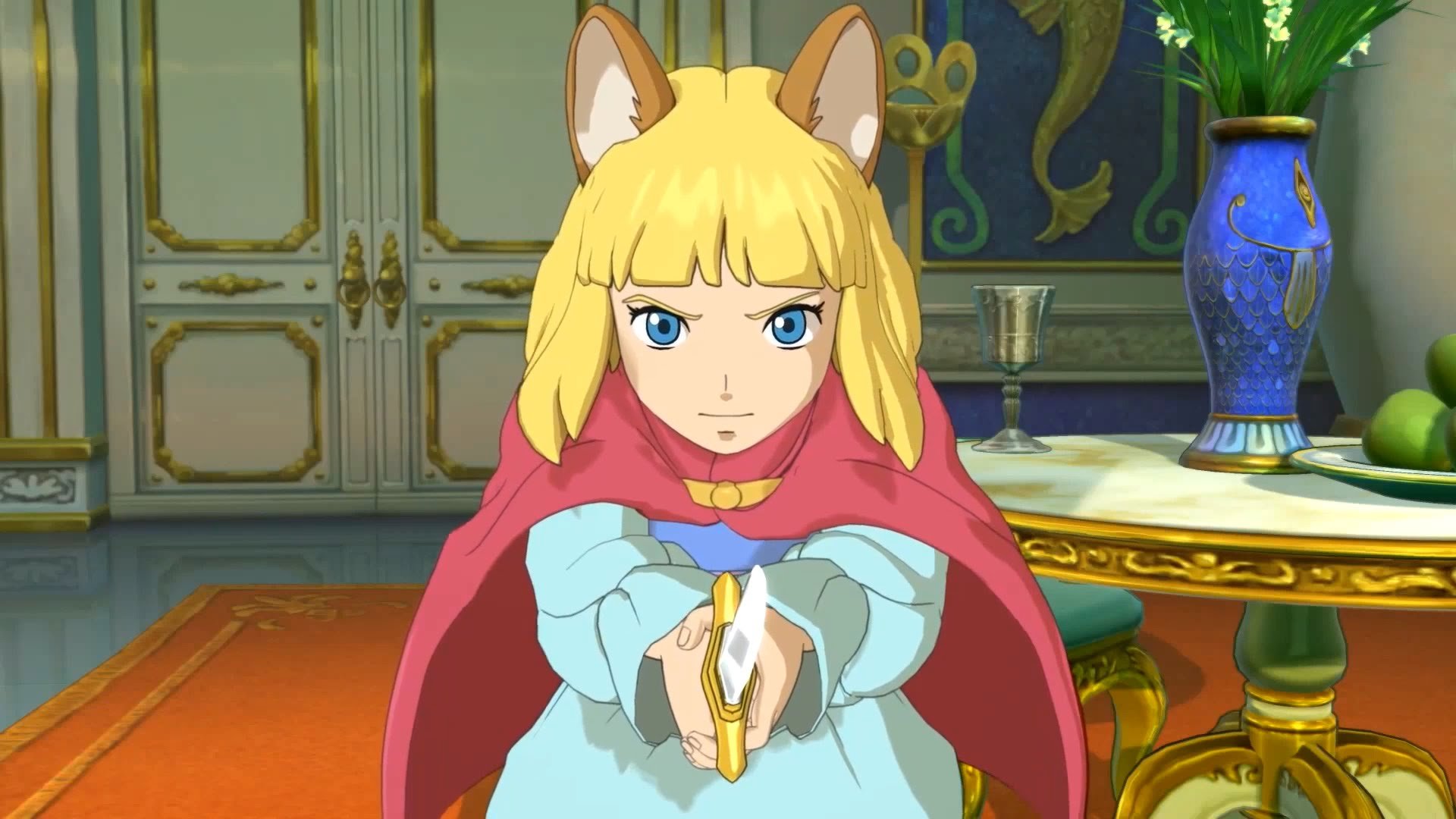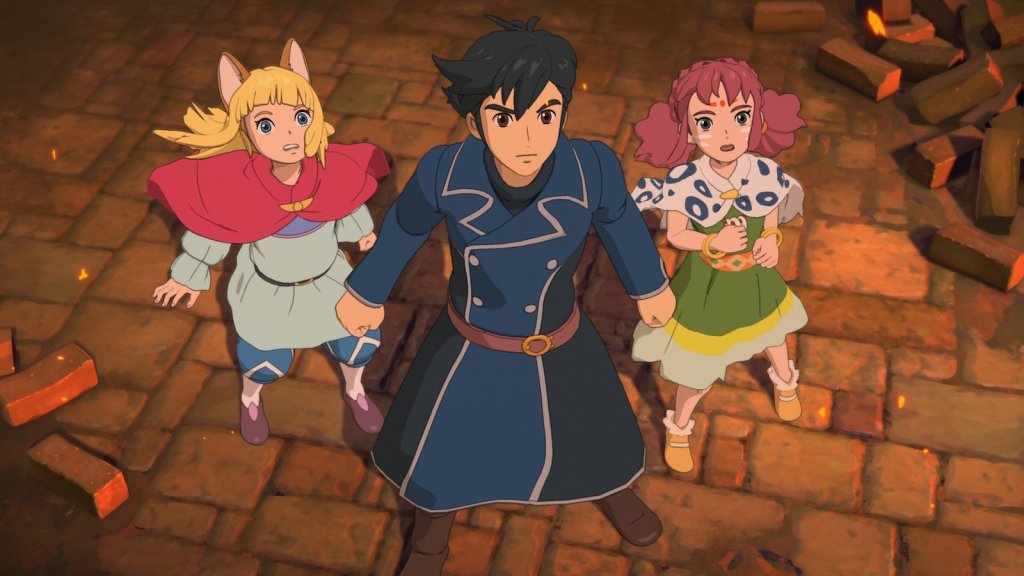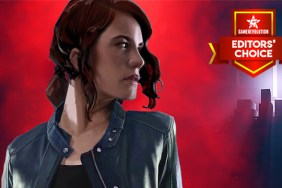Ni no Kuni: Wrath of the White Witch was praised extensively on PS3, and while fans certainly haven’t forgotten the game, as a whole the franchise has managed to keep a relatively low profile. During my second day at E3 I had a chance to both learn quite a bit more about and subsequently go hands-on with its sequel Revenant Kingdom, and if you were worried that JRPG progress had left Ni no Kuni in the dust, don’t be. The game looks breathtaking, promises a host of new mechanics to master, and further entrenches Level 5’s Ghibli-esque prowess telling stories. There’s still much we don’t know, but I walked away enamored and impressed.
Most striking is Revenant Kingdom’s visual style, cleanly bridging the gap between its cutscenes and gameplay ways not many games can. The hands-off portion affirmed that Revenant Kingdom’s quite literal Miyazaki influence, with high-ranking Ghibli-defected staff in charge of cutscenes and art direction, persists throughout the experience. There’s also a third graphical style that’s simplistic and more chibi-inspired (as JRPG’s oft designate certain sections of traversal to), but my demo was short on them. While perfectly pleasant, the more of said sections we see replaced by the game’s fluid and frequently jaw-dropping polygonal anime, the better.

Revenant Kingdom’s main character is an oddball even for Level 5, known as King Evan Pettiwhisker Tildrum and sporting a pair of very real cat ears protruding directly from his hair. The world of Ni no Kuni 2 deals heavily in kings and what makes them, with royalty requiring various cutesy critters (or in one case a massive dragon) called kingmakers. Kingsbonds between wannabe kings and their kingmakers are what move the process along, and as such you can expect Evan and his petlike Lofty to spent quite some time strengthening their familial bonds.
The hands-on portion of Revenant Kingdom’s showing took the form of an arena, with Evan teaming up with several party members for an all-out brawl with a hulking boss called Thogg. The creature wasn’t especially unique initially, resembling something of a bipedal bear and lion combination, until it suddenly exhibited ridiculous agility and began leaping and dodging with superhuman speed.
Evan’s combat arsenal includes standard leaps and sword-strikes that happen in real time, while pressing down R2 expands a four-way menu of special combat capability. The demo list included a standard heal and two fancy sword combos, each of which can be substantially charged and unleashed upon Thogg and his inordinately large total HP. Admittedly the fight was fairly simple and easy to win – it’s likely that Bandai Namco didn’t want its demo overly challenging or discouraging, which is fine, but I would have preferred if the showfloor experience posed a stronger challenge to match what will likely appear in the final game.

An important addition to the game are small creatures called Higgledies, Pikmin-esque sprites that aid you during battles and can be generally directed or employed as battle strategy. Their demo presence wasn’t exactly about racking up damage, but defensive and support roles of said Higgledies definitely helped secure victory for Evan and comrades against the ferocious and oddly evasive Thogg. The Bandai Namco representative assured the group that Higgledies are going to play an important and useful role as the game progressives, so expect substantial strategic layers where you may not have found them before.
Further narrative info was touched on during the presentation, including details on the gambling city Goldpaw plunged toward disarray by its greedy leader Pugnacious, and his kingmaker Longfang who’s been acting strangely (and dangerously) of late leading into the game’s events. Most of these details are probably better left for experiencing the game yourself, though; what you need to know is that Ni no Kuni is back, it’s modern, and it presents itself about as beautifully as an anime-inspired game ever has.







